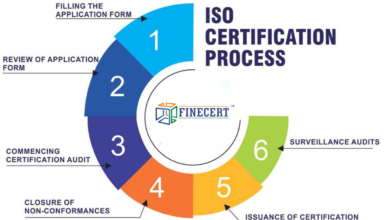GFSI Certification: Future of Food Safety

The Global Food Safety Initiative or GFSI began in 2000. It started as a collaboration among members of the Consumer Goods Forum. The development of GFSI was based on a uniform goal. The purpose was to improve and regulate the management of food safety risks. It is applicable across the supply chain. In the long run, it helps in reducing audit fatigue. Since its inception, GFSI has become an integral part of the implementation process of the HACCP-based food safety management system. The food safety certification programs or schemes assist in meeting a core set of requirements essential to produce safe food. Currently, there are fourteen recognized certification programs across the supply chain sectors.
Real-life example – Where it all started
In 2008, Walmart was the first branded retailer to mandate its suppliers achieve certification by the GFSI-recognized scheme. Since then, it has become a popular part of supplier agreements with retailers, food service providers, manufacturers, and more. With time, it has evolved and included the essentials for GFSI-recognized certification. Largely, this has become the need of the hour for the rapidly-growing number of recalls, consumer demands, and existing food regulations. Thus, a GFSI-recognized scheme assures the buyers that a supplier is responsible and committed to implementing the ideal food practices, continually monitored, verified, and improved over time.
The success of GFSI
GFSI’s success and global reach are a result of its extensive network of stakeholders. Simply put, GFSI’s vision is to offer “safe food for consumers everywhere”, making it the ultimate choice. It is governed by the GFSI Board, comprised of food safety and quality executives from retailers, manufacturers, and food service companies. The purpose of GFSI is to ensure continuous improvement in food safety management systems. It is a priority to deliver safe food to consumers and maintain the right balance between stakeholders’ vis communication and mandates.
Reasons that make it the Future of food safety
Getting certified in a GFSI-recognized food safety program helps suppliers, retailers, and, consumers. It gets accomplished via many programs GFSI including benchmarking of food safety certification programs, development of auditor competencies, etc.
Prime benefits of GFSI certification valued by the suppliers and retailers include these –
- Production of food and international distribution, as accepted food safety standards
- Enhanced global market access and numerous scopes
- Optimal brand protection and enhanced product integrity
- Greater employee awareness about the possible food hazards and ideal food practices
- Reduced supply chain audits with the ideal practices.
- Compliance with the food safety regulations
- Continuous improvement, with increased operational efficiency
Understand the need – Reasons to get certified.
Manage Risk
A robust traceability system offers effective management of food safety hazards, creating an environment capable of producing safe products. It delivers a management system to continually manage, regulate, validate, and improve the system. The traceability reduces product recall reaction time, safeguarding the consumers and the brand.
Expand Market Reach
Statistics exhibit that approximately 1 out of 4 certified companies want their suppliers to achieve certification. If you have not been asked yet, you need to buckle up. You will be asked in the future and it is vital to meet the norms. The certification can help you stay competitive and qualified to operate with current customers and gain access to the larger network of global retailers.
If a customer or market wants your business to become certified to a GFSI standard, one can pick any of the following framework structures –
- FSSC 22000
- Japan Food Safety Management Association
- ASIAGAP
- Primus GFS Standard
- SQF
- BRC Global Standard
- Global Aquaculture Alliance BAP
- Global Red Meat Standard
- International Food Standard
- Canada GAP for primary production
- Global GAP for primary production
- Global GAP’s Harmonized Produce Safety Standard
However, following GFSI-recognized standards are also applicable to producers of fresh fruit and vegetables:
BRC Global Standard
BRC Global Standards was founded in 1996 to reduce audit duplication by UK retailers. It is Global Standard for Food Safety scheme, and it is too applicable to primary producers of fresh fruits and vegetables, etc.
Pointers that matter during the selection
While selecting the apt GFSI-recognized certification program, you need to review multiple aspects. Give this a quick read to know more.
- Availability of qualified auditors
- Regional presence
- Seasonality
- Scheduling
- Audit duration
- Audit frequency
- Overall costs
Closing note
Regardless of which GFSI food safety certification you choose, an annual audit is indispensable to maintain it aptly. Connect to IRQS for a hassle-free edit solution with the ideal practices.






